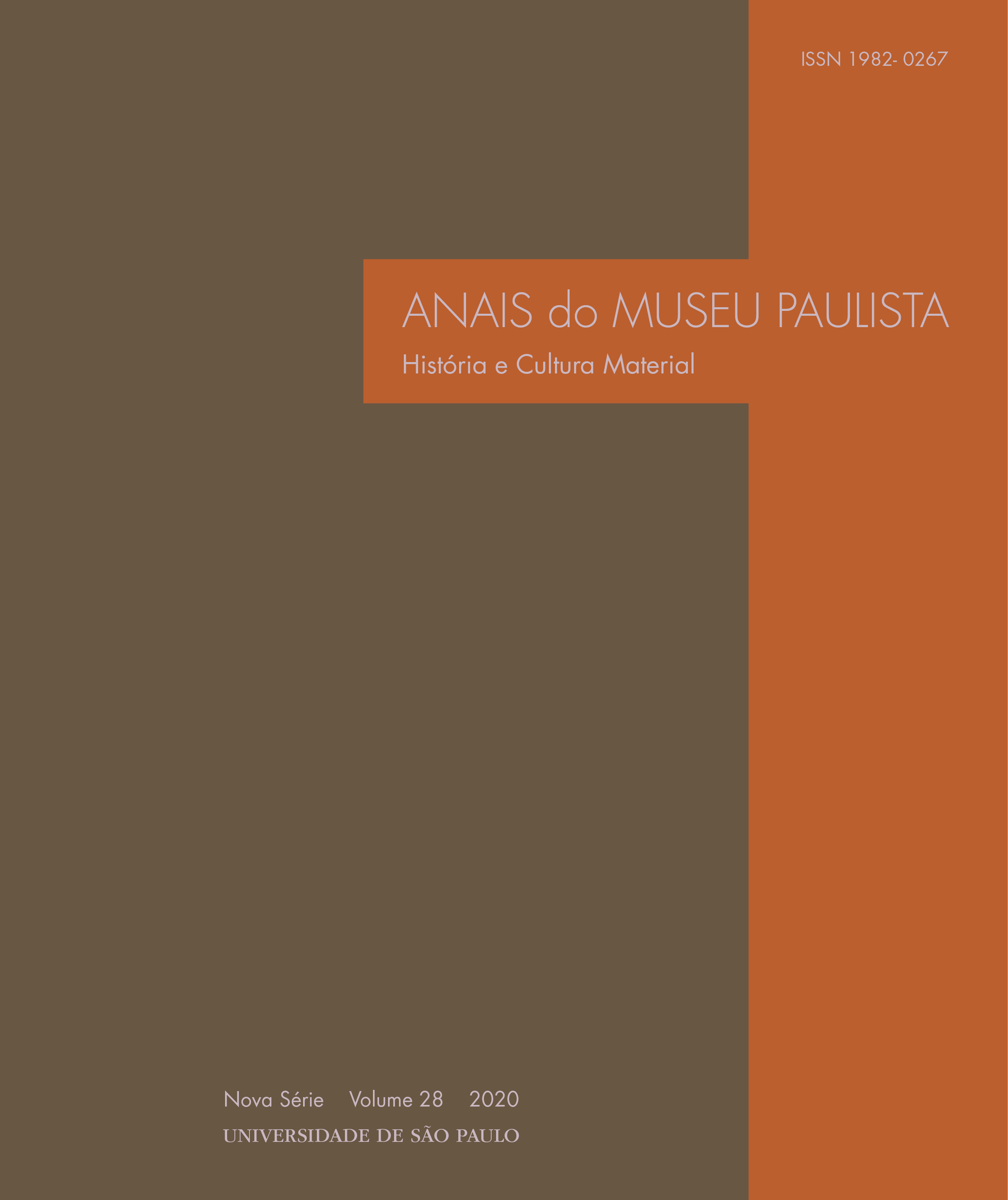Management of museums based on the Post-Occupancy Evaluation appliance. The case of the Historical and Cultural Museum of Jundiaí, São Paulo
DOI:
https://doi.org/10.1590/1982-02672020v28e05Keywords:
Museum Environments, User, Post-Occupancy Evaluation (POE), Facilities ManagementAbstract
In Brazil, there are few researches about museums that contribute more effectively to the management of these facilities and much less researches based on in situ surveys that priorize museum users, whether visitors or staff as an important conservation and maintenance strategy of the building, the collection and the outdoor environments, thus mitigating the risks involved. The article starts from this assumption and describes how Post-Occupancy Evaluation (POE), a set of methods and techniques that encompasses the measurement of user perception and satisfaction and the verification of the physical performance of environments can contribute to address diagnoses and recommendations for consistent maintenance and upkeep for older indoor and outdoor collections (including the building itself). To this end, the Jundiaí Historical and Cultural Museum - Solar do Barão – sited at the State of São Paulo, Brazil, was adopted as an exploratory study object to demonstrate the applicability of POE in the case of heritage buildings and their outdoor spaces and to discuss its methodological procedures as an alternative to strategic planning for museums, relating the conservation of the building, the collection and the external environments, with the welcome and the sense of belonging of the visitors and staff. To sum up and as a result of the POE applied in 2018 in this particular case, we present a set of technical-spatial and constructive recommendations based on research, for the built and landscaped set in question and a critical reflection on the need for incorporate procedures for the maintenance, use and operation of museum on daily basis and also use these results, systematically organized, to feedback future readjustments of the case study itself and, broadly, guidelines for architectural designs. In this perspective, the article highlights the importance of the expert architect in the teams that develop the designs for the restoration and modernization of these environments, as well as in those teams that manage them during their use.
Downloads
References
LIVROS, ARTIGOS E TESES
ASSIS, Elisa Prado de. Acessibilidade nos bens culturais imóveis: possibilidades e limites nos museus e centros culturais. 2012. Dissertação (Mestrado) – Faculdade de Arquitetura e Urbanismo da Universidade de São Paulo, São Paulo, 2012.
ASSOCIAÇÃO BRASILEIRA DE NORMAS TÉCNICAS. NBR 9050 - Acessibilidade a edificações, mobiliário, espaços e equipamentos urbanos. Rio de Janeiro, 2015.
ASSOCIAÇÃO BRASILEIRA DE NORMAS TÉCNICAS. NBR 15575-1 - Edificações habitacionais - Desempenho. Parte 1: Requisitos gerais. Rio de Janeiro, 2013a.
ASSOCIAÇÃO BRASILEIRA DE NORMAS TÉCNICAS.NBR 15575-2 - Edificações habitacionais - Desempenho. Parte 2: Requisitos para os sistemas estruturais. Rio de Janeiro, 2013b.
ASSOCIAÇÃO BRASILEIRA DE NORMAS TÉCNICAS. NBR 15575-3 - Edificações habitacionais - Desempenho. Parte 3: Requisitos para os sistemas de pisos. Rio de Janeiro, 2013c.
ASSOCIAÇÃO BRASILEIRA DE NORMAS TÉCNICAS. NBR 15575-4 - Edificações habitacionais - Desempenho. Parte 4: Requisitos para os sistemas de vedações verticais internas e externas. Rio de Janeiro, 2013d.
ASSOCIAÇÃO BRASILEIRA DE NORMAS TÉCNICAS. NBR 15575-5 - Edificações habitacionais - Desempenho. Parte 5: Requisitos para os sistemas de coberturas. Rio de Janeiro, 2013e.
ASSOCIAÇÃO BRASILEIRA DE NORMAS TÉCNICAS. NBR 15575-6 - Edificações habitacionais - Desempenho. Parte 6: Requisitos para os sistemas hidrossanitários. Rio de Janeiro, 2013f.
ASSOCIAÇÃO BRASILEIRA DE NORMAS TÉCNICAS. NBR 16537 - Acessibilidade - Sinalização tátil no piso - Diretrizes para a elabora%C.
Downloads
Published
Issue
Section
License
Copyright (c) 2020 Anais do Museu Paulista: História e Cultura Material

This work is licensed under a Creative Commons Attribution 4.0 International License.
Autores que publicam nesta revista concordam com os seguintes termos:
- Autores mantém os direitos autorais e concedem à revista o direito de primeira publicação, com o trabalho simultaneamente licenciado sob a Licença Creative Commons Attribution que permite o compartilhamento do trabalho com reconhecimento da autoria e publicação inicial nesta revista.
- Autores têm autorização para assumir contratos adicionais separadamente, para distribuição não-exclusiva da versão do trabalho publicada nesta revista (ex.: publicar em repositório institucional ou como capítulo de livro), com reconhecimento de autoria e publicação inicial nesta revista.
- Autores têm permissão e são estimulados a publicar e distribuir seu trabalho online (ex.: em repositórios institucionais ou na sua página pessoal) a qualquer ponto antes ou durante o processo editorial, já que isso pode gerar alterações produtivas, bem como aumentar o impacto e a citação do trabalho publicado (Veja O Efeito do Acesso Livre).
Funding data
-
Fundação de Amparo à Pesquisa do Estado de São Paulo
Grant numbers 2017/19274-4 -
Conselho Nacional de Desenvolvimento Científico e Tecnológico
Grant numbers 301406/2016-2



